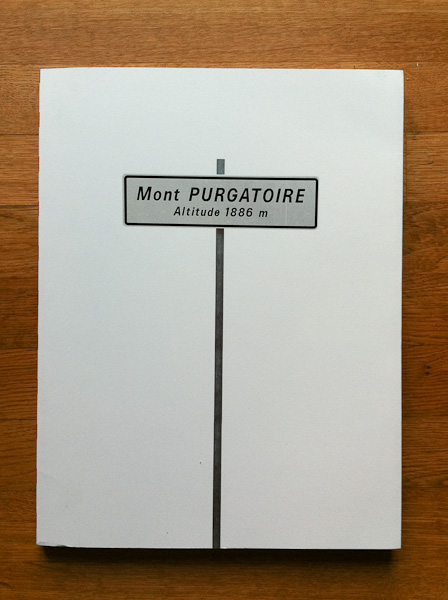After Mariken Wessels' two mysterious tomes (one of which was reviewed here) which seemed to make most 'best of 2010' photobook lists, our Dutch friends have done it again and produced a book which really should not exist. I couldn't help but try to imagine this book idea being pitched to any halfway-sane book publisher, "I want to do a big, 150-page book of portraits of out-of-shape, middle-aged men who try to cycle up this mountain that most people have never heard of, but which has a cool name. The portraits will all be taken from the same head-on perspective with some kind of telephoto lens, they'll be tightly cropped and really flat and even out of focus sometimes because they're cycling up a mountain and the guys will all be sweating and in varying degrees of pain. Oh and as a bonus feature, I'll throw in a promotional website with a background video of one of the cyclists throwing up on the side of the road while some other guys ride past him." 99% of the time he would literally be escorted out of the building, possibly with a restraining order thrown in for good measure, and yet the good people of Habbekrats decided that there was some part of this project that was actually a good idea. The funny thing is that they were right.
There is nothing about this book that should interest me. I'm all for the odd bike ride but serious cycling leaves me cold... sweaty middle-aged men trying to reach their physical limits leaves me even colder. And yet, I was drawn in. Like it's non-illustrated cousins, 2008's Netherland about New York cricketers and current favourite The Hare with Amber Eyes (a 350-page book written about a collection of Japanese netsuke, tiny bone or ivory sculptures), Mont Purgatoire is not really about its (not particularly sexy) subject. Although the book comes with a number of essays written by cyclists, cycling poets and sports writers, the photographs it contains provide no context of the gruelling cycle that these men undertake to make it to the top of this mountain. For all we know, Van der Ploeg never even went near the place. I don't think it's going to reach quite the same sales figures as its fictional cousins, but what I found interesting is the way that it goes beyond its apparent subject to become a kind of study of the way we express feeling. Thumbing through its pages, you can't help but wonder what is going through these men's minds and why they are attempting this punishing climb. Their expressions convey the emotions that you would expect determination, exhaustion, focus, but often also a strong sense of introspection, as if this was less about proving their physical resilience or strength and more a process of self-flagellation.
As with most of the Dutch photo-books I've set my hands on of late, the book is very well made, with a really simple but intelligent and appropriate design. I particularly enjoyed the way that the essays were printed on newsprintish paper and designed to look like excerpts of a fictional (?) local Dutch newspaper. In its own (tongue-in-cheek, faux-Hollywood) words "Mont Purgatoire is an extraordinary photography-project about ordinary men, voluntarily battling their own strength on the steepest slopes." If you're curious to find out more, check out the book's website and I also recommend a trip to Van der Ploeg's website to get a view of his interest in the human face and what he has been doing with it in other contexts.
Adriaan van der Ploeg, Mont Purgatoire. Habbekrats (Soft cover, 144 pages, colour plates, 2010).
Rating: Recommended






